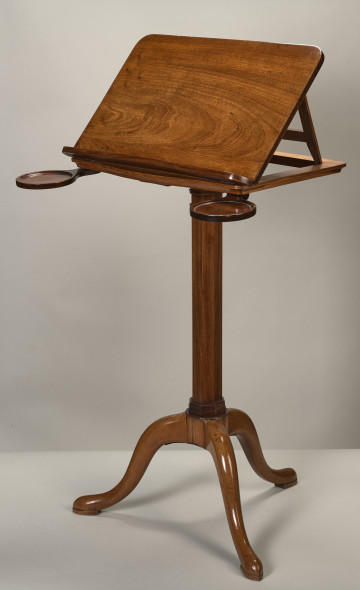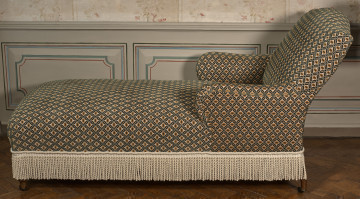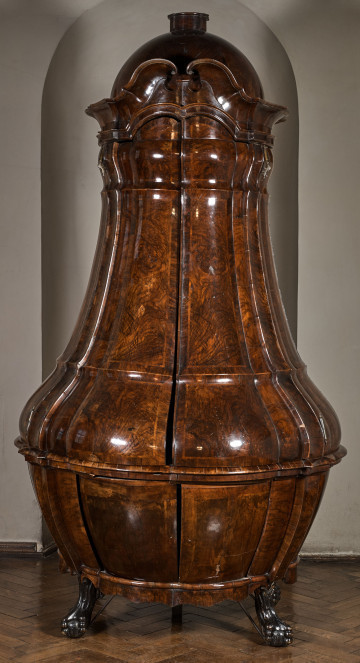
Wooden desktop
18th-19th century
Castle Museum in Łańcut
Part of the collection: Furniture and interior furnishings
A console table [A console] The presented console table is one of six similar pieces of furniture together with S.3705MŁ; S.4205MŁ; S.4207MŁ; S.4209MŁ; S.4211MŁ. They complete the set for four tables with shelves S.520MŁ; S.524MŁ; S.542MŁ; S.559MŁ. The similarity of the materials used and the decorative details testify to the common workshop origin of the furniture set, apparently intended for display purposes. In antiquity, consoles were called brackets used in architecture, for example, Greek and Roman. The Latin word 'consol', translated as consolation, has passed into many European languages. In France, the term 'console', meaning support, was used for brackets, pedestals, wall-mounted tables with narrow, semi-circular and near-semi-circular tops set on support or legs introduced at the end of the 17th century. Consoles had a decorative function since they were used to display sculptures, clocks, vases and similar products used to decorate representative interiors. In the interior, they were grouped symmetrically, often with a space between windows or doors. For greater stability, they were usually fixed to the wall. The back of the console adjacent to the wall remained raw, unworked, unlike the sides and surfaces facing the viewer. Consoles were popularised in the 18th century and shaped according to the prevailing fashion, using characteristic stylistic forms and details. The discussed console took the form of a wall-mounted semi-circular table with three legs supported on a semi-circular base. The top and base were veneered with a layer of mahogany. The curved and jointed legs are covered with a sculptural decoration of stylised acanthus leaves. The carving is a clear classicising accent, typical of Biedermeier style dominating in Central Europe from the second to the fifth decade of the 19th century.
Author / creator
Dimensions
height: 88.5 cm, width: 103.8 cm
Object type
Furniture and interior fittings
Technique
veneering
Material
birch wood, pine wood
Creation time / dating
Creation / finding place
Owner
Castle Museum in Łańcut
Identification number
Location / status

18th-19th century
Castle Museum in Łańcut

20th century
Castle Museum in Łańcut

18th century
Castle Museum in Łańcut
DISCOVER this TOPIC
Castle Museum in Łańcut
DISCOVER this PATH
Educational path